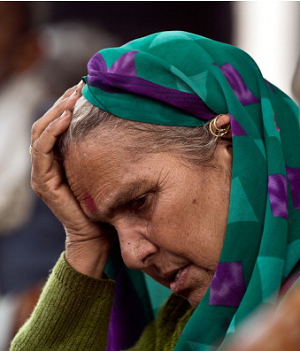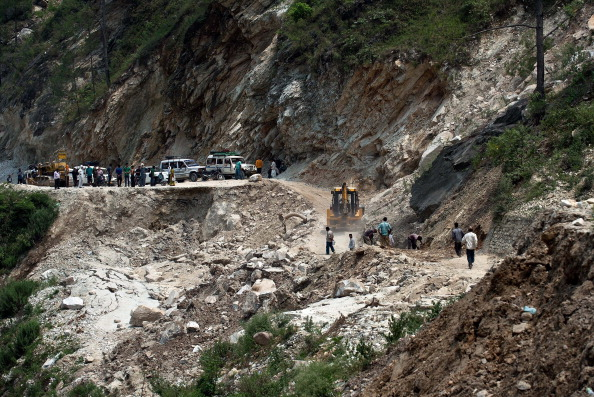Apr 19, 2024
Apr 19, 2024
Continued from Nature's Ire
 Last evening, (21st June, 2013) I was one of the panelists in the TV news channel attempting to threadbare the recent mishaps in Uttarakhand, and one the panelist was repeatedly blaming the hydroelectric projects in the state as the main reason behind the disaster.
Last evening, (21st June, 2013) I was one of the panelists in the TV news channel attempting to threadbare the recent mishaps in Uttarakhand, and one the panelist was repeatedly blaming the hydroelectric projects in the state as the main reason behind the disaster.
Having worked extensively in the neighboring Himalayan state, Himachal Pradesh (HP), I was wondering if that (hydroelectric projects) be the reason why HP isn’t breaking down in to pieces. After all, they too have their share of dams and power projects-like, The Bhakra-Nanagal Project, Beas-Sutlej Link project, Nathpa-Jhakri Project etc. There are many more, but these three are some of the major projects, hence listed here. Amongst these, Bhakra is a wonder of engineering. No doubt, construction of the Dam at Bhakra has submerged a large area, like the Tehri reservoir, but that is inevitable. Personally I am not in favour of large hydroelectric projects, but trust me while such behemoths are constructed no stone is left turned unturned, as far as the safety of the structure is concerned. Therefore, statements that blasting is weakening the Himalayas, dams are obstructing the flow of the rivers etc. sounds ridiculous to me.
Before discussing the ailment of Uttarakhand, a brief glimpse on the development of HP as a Himalayan state will give the readers an insight, how ideal development process works.
Most of the younger generation anti-dam activists do not know that the HP too had its pangs of development. Much before the Giri Project came up, while working in the interior of Sirmur district in 1969, I had to trek 16 km. on a perilous slope where the entire length of the road had been washed out due to incessant rains. Fortunately, my Jeep had gone to fetch dak etc. so it remained intact, but I had to pack my tents in torrential rain and shift the equipment, personal belongings etc on mules, leaving the Jeep’s trailer behind at the mercy of two employees of electricity department.

Border Roads personnel and rescue workers clear a damaged section of road near Chamoli on
June 22, 2013. Relief teams were racing against time June 22 to rescue tens of thousands of stranded
people in rain-ravaged northern India as the death toll from flash floods and landslides neared 600.
Floods and landslides from monsoon rains have also struck neighbouring Nepal.
There is a reason behind this narration. The entire length of the road was washed away, not because of poor quality of construction or because of a dam or because of blasting or because of any possible human interference. The mountain decided to slide down because it was completely rain soaked, the newly constructed road did not have enough ‘weep holes’ on the breast wall to allow the subterranean water to flow out. Thus there was no human hand in the incident and there was case of corruption involved. The road was hurriedly completed because the Lt Governor wanted the remote area to be accessible as soon as possible.
Likewise I have umpteen numbers of incidents to narrate where no one was at fault, no encroachment was made on the path of a river, forests were not touched, yet the mountain slid down.
While HP was taking shape and it was a Union Territory the Government of India pumped in hordes of money to develop the state before handing it over to a regularly elected government. It is not that that the government servants, the contractors and the ministers were very clean people. They did have their weaknesses and did indulge in money minting, where ever they could. But the only positive point was that the quality of construction was never jeopardized.
It is also important to understand the significance of proper drainage in a mountain terrain. Kalka-Shimla rail road, a 96.54 km long, 762 mm wide rail track was laid by the British. It was opened for traffic in 1903. The rail track cuts across 102 tunnels and 864 bridges. To understand the significance of proper drainage, I strongly recommend the readers to undertake a journey from Kalka to Shimla. The giant, stone paved, cemented network of drains ensures that not a drop of water is retained on the hill slope. Since its inauguration, till date the rail traffic has moved uninterrupted on this route, without a landslide. The road running parallel to the rail track, of course does have its share of landslides, but now the mountain slopes have stabilized and as such the number of slides is almost negligible.
A lot of credit for the uninterrupted rail traffic along this route goes to the residents along the route, for not encroaching on the railway land. This is most important and goes a long way in keeping the communication links safe.
Now lets us examine the scenario in Uttarakhand.
As far as the share of natural disasters is concerned the geological and geomorphological setting of both the states is such that both have to share the equal brunt of the wrath of the nature. Yet HP has lesser casualties. Why?
Let us start from North. The holy shrines of Badrinath and Kedarnath in Uttarakhand are situated in valleys carved by the retreating glaciers. The valley floors here are made of glacial debris. With age it gets re-cemented and looks solid, but debris is debris, cannot be and should not be trusted for large scale construction of houses/hotels/resorts etc. That is where the Uttarakhand Government miserably failed. They wanted to develop at any cost and now they have to pay the cost in terms of money and people’s wrath. Despite geological Survey of India’s several reports about not inhabiting these two valleys in a big way, permission was granted to builders. In Kedarnath the debris mass began to slide down after rains, because the drainage of excess water was already choked by the houses in its passage. Except the Kedarnath temple’s sanctum sanctorum everything else perished.
The turbulent Himalayan Rivers when in spate cut and scour their convex margins/banks. This is a simple thumb rule. The planners and developers of Uttarakhand left all the rules in the hands of builders and multistory houses came up right on the banks of rivers, that too in a highly earthquake prone area-Uttarkashi. The outcome has probably been witnessed by everyone reading these lines, so I need not repeat the horror story.
No doubt the main culprit was the nature — the heavy rainfall caused it — but the greedy builders joined hands with the nature and made structures at their will or wherever they found a flat piece of land. This should not have been allowed by the local authorities.
As per the met reports more rain is in store. More horror stories will come out. The places like Nainital and Mussoorie are the next hot spots for landslides. The population density of these places is scary and I shudder to think of the consequences.
The Uttarakhand Government should now rethink about its development policies. There has to be a short term plan to open the lines of communication damaged by this year’s mishaps and also some of the roads damaged in 2010. But they have got to think of a long term plan. Since the state is geologically most sensitive it would be advisable to include some expert geologists of GSI or whichever organization the government deems fit. Development on a shaky ground without technical knowhow of the ground can lead to disasters. There are many factors which engineers have to overlook, because of peer pressure. Thus it would prudent to have a comprehensive team of experts to chart out a plan for the future.
Images (c) Gettyimages.com
22-Jun-2013
More by : V. K. Joshi (Bijji)

|
Thanks Jayati and Dr Makhan Lal Das. |

|
Very informative, well-written...fully agree with your views.. |

|
Aha! The damn - it is pack of liers ready to blame development and progress - as if it is not glaring enough that the char-dhams came under the eyes of misanthropes... read many comments in the internet that fly about asking pilgrims not to take such journeys - Huge mountains just cannot crumble as house of cards and clouds & rivers burst without underground nasty activity - carried out in utmost secrecy! Uttarkhand was not a cut out State before - but now appears isolated to make a kill! Naturally weird thoughts will flash by with actions going on.... I am yet to hear any sentence uttered by Central Gov political brave hearts that rule the country - Soniy G is having throat pain - MMS perhaps too - We I ndians are great at inviting crocodiles who not only shed fake tears but bang with their tails to hit and splurge so that the bootyy can land into their gullets - Huh! |